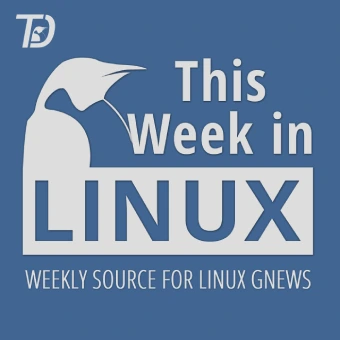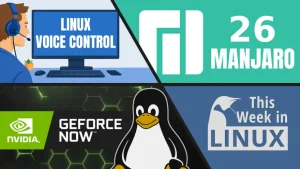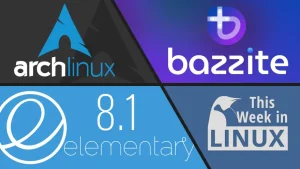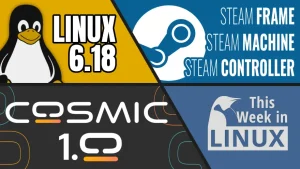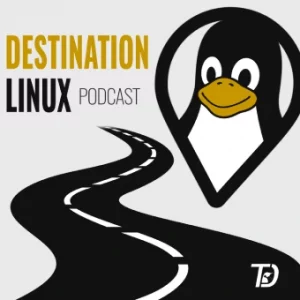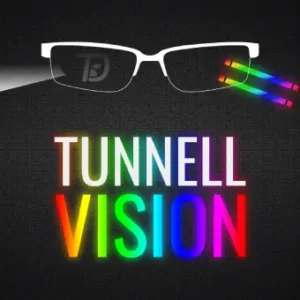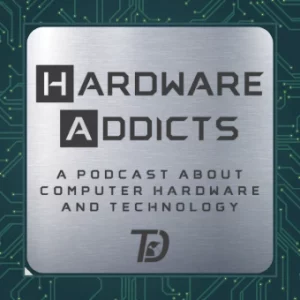This week in Linux, we have a lot of news, just a crazy amount and some big stuff like the Linux kernel 6.11 is out. GNOME 47 has been released. Microsoft is making kernel mode changes and we’re gonna talk about what that means for Linux and Linux gaming. Zorin OS 17.2 is out. All of this and more on This Week in Linux, the weekly news show that keeps you up to date with what’s going on in the Linux and Open Source world. Now let’s jump right into Your Source for Linux GNews!
Support the Show
Become a Patron = tuxdigital.com/membership
Store = tuxdigital.com/store
Chapters:
00:00 Intro
00:37 Linux Kernel 6.11 Released
04:41 GNOME 47 Released
15:42 Microsoft making Kernel Mode changes, and what it means for Linux Gaming
20:17 Zorin OS 17.2 Released
24:25 MX Linux 23.4 Released
26:04 Fedora Linux 41 Beta Released
32:06 Rockstar Destroys Steam Deck Support for GTA Online
35:56 Support the show
Links:
- Linux Kernel 6.11 Released
- GNOME 47 Released
- Microsoft making Kernel Mode changes, and what it means for Linux Gaming
- https://www.notebookcheck.net/Microsoft-paves-the-way-for-Linux-gaming-success-with-plan-that-would-kill-kernel-level-anti-cheat.888345.0.html
- https://blogs.windows.com/windowsexperience/2024/09/12/taking-steps-that-drive-resiliency-and-security-for-windows-customers/
- https://www.gamingonlinux.com/2024/09/microsoft-windows-kernel-changes-dont-suddenly-mean-big-things-for-linux-gaming/
- Zorin OS 17.2 Released
- MX Linux 23.4 Released
- Fedora Linux 41 Beta Released
- Rockstar Destroys Steam Deck Support for GTA Online
- https://tuxdigital.com/videos/rockstar-destroys-steam-deck-support-for-gta-online-lying-about-it/
- https://www.gamingonlinux.com/2024/09/grand-theft-auto-v-gets-battleye-anti-cheat-breaks-online-play-on-steam-deck-linux/
- https://support.rockstargames.com/articles/33490543992467/Grand-Theft-Auto-Online-BattlEye-FAQ
- https://store.steampowered.com/news/group/4145017/view/3104663180636096966
- https://www.battleye.com/about/
- Support the show
Transcript
Michael:
[0:00] This week in Linux, we have a lot of news, just a crazy amount and some big stuff like the Linux kernel 6.11 is out. GNOME 47 has been released. Microsoft is making kernel mode changes and we’re gonna talk about what that means for Linux and Linux gaming. Zorin OS 17.2 is out. All of this and more on This Week in Linux, the weekly news show that keeps you up to date with what’s going on in the Linux and Open Source world. Now let’s jump right into Your Source for Linux GNews!
Michael:
[0:37] A new Linux kernel has been released and there’s a lot of improvements to talk about. So let’s jump into the big list of new things. Actually, before we jump into the list, I want to cover a little bit of what Linus said in his announcement, because it always amuses me when he undersells things, because that’s most of the time. He said last week was pretty quiet it and calm. Also, he’s typically posting these things when the new release is not talking about everything that happened. That would be ideal. But he’s usually covering about the previous week that, you know, each week they do a separate post. And he says the short log is below for anybody who wants to look at the details, but it really wasn’t very many patches.
Michael:
[1:15] As far as the patches and improvements that happened in the kernel itself, we’ve got a lot of those. So let’s check those out. First, we have some AMD improvements to talk about. 6.11 adds AMD Core Performance Boost Control to the AMD P-State driver, allowing to opt in and opt out of turbo and boost frequency ranges and control performance boost for individual core. And the recent Power Profiles daemon release sounds primed to support this, which is fantastic. AMD Fast C PPC has been added to the AMD P-State driver. This is a power efficiency feature for the recent Zen 4 mobile processors for Ryzen, which basically gives better performance overall between 2% to 6%, which doesn’t seem like a lot, but any better performance is good and well appreciated by people who have AMD hardware, such as myself. AES-GCM decryption and encryption is much faster, up to 160% faster on modern AMD and Intel processors.
Michael:
[2:17] And the work has been done by the same Google developer that developed major gains in the AES-XTS performance from the previous kernel release. So speaking of Intel, we have some Intel improvements to talk about, such as improvements to the perf subsystem support for the performance monitoring unit or PMU on these chips. And also there’s been improvements to the tpm i driver to enable user space intel performance limit reasons for reporting this gives details on why a cpu core is giving lower than expecting performance levels and many more things for the intel hardware this is always really good to see because you know intel puts a lot of effort into the kernel support of their hardware even when they don’t release stuff sometimes they still put in hardware support which is always great to see and based on the prices for hardware these days, it’s hard to do an upgrade at any point, but I am very tempted to get an Intel GPU because, well, it just sounds…
Michael:
[3:17] It’s just something I want to try. Who knows? At some point, maybe the prices will go down and I’ll give it a shot. We also have some improvements for ARM64 support for various different bug fixes and that sort of thing, as well as some RISC-V improvements for its gaining support for memory hot plugging under 6.11. Plus, there’s a bunch of new ISA extensions and also the Stackleak security support has been added, initial NUMA support, console output, and cache info on ICPI-based systems and other various different changes and bug fixes and that sort of stuff. This also includes some improvements for support for various different ARM-powered laptops, which is great to see. We also have some support for various different laptops. We have new hardware from Lenovo. We also have some support for some Snapdragon X1 Elite laptops, which is really cool to see, and also many, many more. There’s so much stuff to talk about with every new release of the Linux kernel, especially with 6.11. There’s stuff like no longer prevents rights to busy executable files, swappiness argument support for memory reclaim, extensions to the list mount and stat mount system calls have been added and many more.
Michael:
[4:32] Unfortunately, there’s not time in the show to cover everything, but if you’d like to learn more about it and all the details for the release, you’ll find links in the show notes.
Michael:
[4:40] So the GNOME team have released GNOME 47 with the code name Denver, and there’s a lot of changes. Most of it’s in a polishing and making some improvements overall, but probably the biggest thing on the list is the accent colors, because in addition to having a light and dark mode, you can also now change the accent color, based on like the various buttons and, layouts and things like that. I’m not sure if the folders are changed, but hopefully that is changed when you do that, because that would be really nice to have that cohesion. But I think this is a good improvement for a lot of people because some people might not like the default and want to have their accent color be able to be customized. And this is good. It’s following the same path that a lot of DEs are doing as well, adding accent colors directly into the default themes, which I find a very good idea. So good job, GNOME. I found a video about the introduction of GNOME 47. This is something they do every time they make a new release. And I thought it’d be fun to react to it on the show. So let’s do that now, I guess. I’m going to click it, start full screen. More refinement. Let’s, okay.
Michael:
[6:02] If you can do that, okay, first of all, if you can do that, like first the music is good, the beat editing, like it’s good, but it’s not really saying anything. You know, this part where it’s showing the different change in colors, that’s good, but, This part where they’re doing that, if I can change the angle of this and actually make it do this, where I can have the 3D shifting and then have the windows like that, that’s very cool. If you can’t do that, you shouldn’t put it in the video. Especially with the blur on the sides and you can like, that’d be cool. Anyway, more community. Sure.
Michael:
[6:47] What does that mean are those photos in the desktop probably not why what are you talking about all right that’s just a link and everything okay so this video is really nicely edited it’s fancy uh it’s great and it’s kind of confusing and it doesn’t really explain that much it only talks about the accent colors and that’s basically it i know it showed the smaller screen changes, but without the context of what that was, it’s not clear at all. In the future, I would recommend making a little bit of adjustments on your videos. Now let’s talk about the other features that are in this release. So we have some improvements for the system. More specifically, we have enhanced small screen support, and this is very good. So GNOME 47 enhances the user experience on screens with lower resolution by optimizing how icons and interface elements are rendered depending on the size of the resolution and the display so if you have a very small display maybe a tablet or some kind of additional monitor that’s meant for like a very small use case it was previously kind of awkward to use you can see right here let me re let me kind of zoom out a little bit so you can see right here they had it where the The icons are small, but if you hover over it, you’ll see it’s got the modification.
Michael:
[8:08] So you can see the difference. The window is a little bigger and also the icons are much bigger. So if you have a 800 by 600 small screen or a tablet, this would be a lot better for that experience. So well done there. Something super valuable to me would be Screencast Hardware Encoding. GNOME 47 introduces support for hardware encoding on Intel and AMD GPUs when recording the screen. This slightly reduces the strain on your system during screen recording. I’m curious.
Michael:
[8:41] Oh, it says significantly, not slightly. I don’t know why I read slightly, but it says significantly. As a result, you’ll experience some smoother performance with less impact on system resources, making it easier to capture high quality screenshots, screencasts, without compromising the responsiveness of your desktop or other running applications. This is fantastic. They are saying it’s good for creating tutorials, recording gameplay or streaming. And that’s great because I am currently streaming this episode. So hopefully I’ll be streaming more in the future. And if I’m ever using GNOME, that would be good, useful value for me.
Michael:
[9:18] Good job, GNOME. Faster and more accurate rending, this release also brings significant improvements to GTK rendering, especially for older hardware and mobile devices. Users on legacy systems or mobile phones will notice a more responsive and visually consistent experience.
Michael:
[9:32] This is very nice. A lot of the stuff is under the hood type of improvements, which is always good to see, but having better support for older hardware and of course, mobile devices for those who are interested in using like GNOME on a tablet and that sort of thing is a fantastic improvement. So well done. But also, I think one of the things that I most personally interested in is the remote desktop sessions, because they’ve made a big improvement for those who are using that. Because now if you get disconnected, it will stay connected technically, and you can just easily get back into where you were. So the system will have a persistent mode if you want it to. Now, I don’t think everybody’s going to want it to. So maybe they’ll have an option to turn it off. But I like the idea of having that because I’ve had many times where I’m doing something and all of a sudden things just crash and I have to start over and not starting over in remote desktop session would be much better depending on what you’re doing. GNOME 47 comes with brand new file open and save file dialogs. The new dialogs are a major upgrade compared to the previous versions and are based on the existing files app rather than being a separate code base which is very good because when you’re going into the file manager and then your pop-up dialog window is a different functionality and it doesn’t offer you certain things that you’re expecting it to because it’s not the same application.
Michael:
[10:53] It can be kind of annoying because, for example, not being able to rename a file when you’re about to upload something because you’re like, oh, I forgot to upload. I’ll just right click it really quick and change the file name. And then, nope, can’t do that. But with GNOME 47, you can, which is fantastic. So you can rename files and folders, you can preview files, you can change the sort order, and all sorts of stuff. So this is a very, very much improved, very welcomed thing, for me, at least, because they’re, you know. That has bothered me in the past, so I’m happy to see that. They’ve also improved the File Manager app itself. They have several significant navigation improvements that they say. A new network view provides a better way to browse remote locations with a clear list that is divided into sections for currently connected, previously used, and available networks. You can see as a screenshot here in the video.
Michael:
[11:48] They’ve also made better improvements on the search functionality inside of files. They’ve added some context for the search functionality inside of files, which is really nice because this added context helps users understand where certain searches might be slower or incomplete due to not having some kinds of features like location indexed, or if it’s in a remote directory and that sort of stuff, it can tell you that, you know, this might be why it’s taking longer. The next thing I want to talk about is an improvement for accessibility, which I always love the fact that GNOME puts effort into accessibility because accessibility is super important for so many people. And they’ve made it possible to activate windows on hover, which gives you this option to basically just move your mouse on top of the window to pull the focus to it, which I think is nice for people who need that kind of thing. They’ve also made improvements to the online account system in GNOME. So the IMAP or SMTP email account details now automatically complete based on the address used, which is fantastic. And it’s like, for example, if you have something like a custom.com, in theory, you would be able to put in the default standardized connection features that you would typically expect, like the TLS port and that sort of thing, which is very nice. Kerberos accounts use less power on an ongoing basis.
Michael:
[13:13] Email calendar and contact integration has been added for Microsoft 365 accounts for those who are forced to use Microsoft 365.
Michael:
[13:20] And when setting up WebDAV accounts, available services are now automatically discovered to provide more streamlined setup experience, which is always great. Anytime you can improve the setup of something, that is always going to be appreciated to people who are using it because and sometimes it even might give them like a wow factor of like, oh, I don’t have to do that much to get this. So I always love seeing that sort of thing. Up next is the web browser for GNOME, which is called Epiphany. They refer to it as GNOME Web, but I can’t stand the way that they refer to applications as GNOME Web or just Web and then files is just files. Because good luck searching on getting help on that. Oh, I need help with my web browser or web app.
Michael:
[14:07] Yeah, not great. Anyway, so it’s actually called Epiphany and the underlying code information. And epiphany with version 47 has some improvements and new features so they have automatically fill forms options so you have a new auto fill feature allows you to automatically complete forms based on previous responses which is very nice also they have redesigned the bookmark system to have a bookmark sidebar which gives they say a better experience for browsing and searching your bookmarks and you can see that here in the visuals also they have improved some like privacy related stuff so So there’s a new privacy report features.
Michael:
[14:44] Which displays how many trackers have been blocked by GNOME Web, aka Epiphany. Making this previously hidden information available allows you to stay informed about your online privacy, which is great because, you know, having that information is great and also having that built into the system is really good to see. Now, there is a note that unfortunately Firefox Sync is not supported in the latest version of Epiphany / GNOME Web.
Michael:
[15:08] And also previous versions that they updated because there’s an OAuth authorization issue happening with Firefox Sync. They do plan to have it fixed in the future. They just don’t know when yet. You can find links in the show notes to see more information about that. Overall, this is a nice polish feature update to GNOME. Not a big deal in terms of like huge new features, but it’s always nice to see when some features are just polished and made improved overall all to make the experience just better to use.
Michael:
[15:40] And that’s always nice. So an interesting article caught my eye from Notebook Check. And I have used Notebook Check many times to talk about reviews of various laptops or notebooks. And they are pretty good at doing that. They should probably stick to that because they say that Microsoft paves the way for Linux gaming success with a plan that would kill kernel level anti-cheat. They say that Microsoft has officially announced its intent to move security levels out of the kernel. Where did they say that? So here is the blog post they are referencing, taking steps to drive resiliency and security for Windows customers.
Michael:
[16:17] Now, let’s talk about here. They had the Windows Endpoint Security Ecosystem Summit recently, and they did talk to various different companies about stuff related to CrowdStrike incident and etc. There are many things here related to that, but they do talk about kernel mode. And when you look for kernel mode, you see that they say Windows 11 improves security posture and security defaults enable the platform to provide more security capabilities to provide solution providers outside of kernel mode. That does not mean they’re removing the functionality of kernel mode. So the kernel-level anti-cheats, this claim here, saying that they intend to remove security mergers out of the kernel, where did they say that?
Michael:
[17:04] They’re talking about having functionality outside of kernel mode, yes. But that doesn’t mean they’re removing the functionality of having kernel mode access. That’s just in addition to. So the conversation goes on to talk about what this could be for Linux gaming. Yes, if they took it out of kernel mode, that would be theoretically better, but in some ways not because actually it’s funny because kernel level anti-cheats in Windows games, if they are compatible with Proton and Wine and that sort of stuff with Steam Play, it’s actually better to play the games. It’s more secure for the developer for Linux gamers to be there. Because this is a topic that a lot of people are misinformed about is that they think that having Linux as the host somehow makes it easier to hack into a game and mod it and whatever.
Michael:
[18:05] But really, it’s the opposite of that. Because with a kernel level anti-cheat, like for example, BattlEye or EasyAntiCheat, those are still working with the Wine kernel. And that’s not gonna be any different than with the Windows kernel. They’re still having access to be able to detect people. With Linux, it’s very different because the developer of the cheat would have to know how to write Windows code, Linux code, also how wine works how proton works the difference between wine and proton and how to write code that was able to bypass cheats inside of wine and proton there is a lot more to deal with if you wanted to have a linux cheat going through proton and into a game that has one of these anti-cheats on the kernel level so in a way as long as this thing is supported on proton linux gamers are actually easier to have on your system and not have to worry about cheats because of how complicated it would be to even make a cheat for any given game. This is an interesting take in the sense that this, if they were to take out kernel mode, would that be better for gamers? It would be better for Windows gamers. I don’t think it really has much value to Linux gamers because Valve’s Proton is already a pretty solid solution for developers and game developers developers.
Michael:
[19:32] It’s not that much of an impact on Linux. Maybe it would be helpful, but it probably would be very minimal, if anything. In fact, it actually might even be worse if they create this new API that these solutions companies create for security stuff that only works with this API and these anti-cheats are made for that API and that API is not documented because they want to keep it proprietary proprietary, and then the anti-cheats don’t work on Linux at all, like that would be worse. So it is an interesting topic, but I don’t think Microsoft is paving the way for Linux gaming. In fact, I feel like it might be worse and it might have no impact whatsoever.
Michael:
[20:17] Zorin OS 17.2 has been released and they say it is their most capable, customizable, and compatible version yet. Now this has a lot of cool features. We’re going to talk about them one by one, but I am really excited about some of them. So let’s check it out. So we have a new appearance features. They say that they’re making the desktop more customizable than ever. So they made additions and improvements to the Zorin appearance setup in these settings, which you now have the ability to do additional theming. So you can change the cursors, you can change icons. You can also install third party themes, which is fantastic to see. There’s a lot of of customizations you’re going to do. And they also have the ability to do custom styling for native lib, add way to apps and also many more things. So that’s a really nice addition. They’ve also added a new windows section to this, to these Zorin appearance. Now it’s not windows as in the operating system. It’s more of the, they just it’s capitalized windows because I mean, it’s talking about windows and how they work.
Michael:
[21:22] But so this new section has given more improvements to organization and how the placement and behavior works of the windows. So you now have the ability to how you activate the window key action keys is how you interact with them. You can change that. You can also change the way that the windows are loaded when they when you create a new window, how it lays out on the screen. There’s various different drop down options for that and many, many more. So this is really nice to see. Xorin OS is one of the nicest looking desktop distros for Linux. And I feel like it’s just getting better with this new release. They’ve also made some improvements to the overlay scroll bars. Well, technically, they added overlay scroll bars so you can toggle them on and off. So you can make these really big scroll bars if you want or really small ones that hide when you’re not on the window. They’ve also made some updates to various different pre-installed apps.
Michael:
[22:20] So for the out-of-the-box experience to be much better and having newer software, which is always good, but they also have a support for Flatpak app images and Snap packages. So you can get the latest and greatest versions of various apps if you use one of those formats. And they’ve also got better security and compatibility. I was super happy to see this news because they’re saying that Zorin OS 17.2 is now using the same version of the Linux kernel that the latest Ubuntu 24.04 LTS has. Now, this is important because Zorin OS 17.2 is based on 22.04, not 24.04, which means they’re having hardware enablement updates, which is awesome. So for a long time, it’s hard to tell whether or not that Zorin OS, if it had hardware enablement, I couldn’t tell. Now we have an indicator that it is. So I contacted Zorin to find out, out and they said that they do have hardware enablement. So the next release of Ubuntu, which would be 2410 will have a kernel update inside of Zorin 17.2 or 17 point whatever, depending on when it comes out. So that’ll be happening a few months after the 24.10 release, but it’s great that that’s even a possibility because for a lot of these different LTS distributions, hardware enablement is not available.
Michael:
[23:42] Linux Mint just added it with Mint 22, and now I don’t know when they added it for Zorin OS, but I can confirm it is there now, so that is awesome. So if you’re new to Linux and you are interested in checking out a fantastic option for beginner distros, Zorin OS 17.2 is going to be a great option for you and if you just want to have a really nice super polished distribution Zorin OS is also going to fit that bill too. I think Zorin OS is great my co-host Ryan from Destination Linux uses Zorin OS and has been for quite a while so I’m sure he’s going to appreciate this update but let me know in the comments below if you’re a Zorin OS user what do you think about this update and if you’re not are you interested in checking it out let me me know in the comments.
Michael:
[24:24] MX Linux 23.4 has been released, and this is the fourth refresh of their MX 23 release. It includes bug fixes, kernel updates, application updates, and all that sort of stuff based on what was originally in MX 23. The highlights of this release include updates for the XFCE 4.18 core packages, and also the MX package installer now shows all install packages in enabled test and backport tabs, not just those available in the configured repo. The MX Live USB Maker now defaults to Lux2 encryption for those making encrypted live USB devices.
Michael:
[25:03] Pipewire Setup MX has been updated to make Pipewire and WirePlumber startup under sysvnit more reliable, especially for those who are using KDE Plasma. The AHS users have updated firmware packages, which are backported from Debi and Sid. If you’re not not familiar. The AHS is basically MX Linux version of the hardware enablement. I don’t remember what the AHS stands for. I think it’s advanced hardware.
Michael:
[25:30] System, something like that. They’ve also added a lot of bug fixes and also all kernel updates have been done for the standard XFCE, KDE, and Fluxbox ISOs. So they have the latest of 6.1.106 kernel and the AHS now uses 6.10.10 licorice kernel. So the AHS has a much more up-to-date as I was talking about, but it’s not the latest kernel that will probably happen in a few weeks or so because it, you know, it just came out this week.
Michael:
[26:03] Fedora Linux 41 beta has been released. So if you would like to help test the next release of Fedora Linux, you can do so now. And this is, there’s a lot of changes with Fedora 41. We’re going to go through some of the list. For those who don’t know what a beta release is, Fedora has an answer to you for the Fedora. What is It’s a Fedora beta release, and it’s essentially saying that it’s almost ready to be released, but it’s not exactly there yet. And if bugs are found and reported, they will address those. And so there you go. That’s basically what all betas are, if you didn’t know. So let’s talk about some highlights. For example, Redis has been replaced with Valky. So Redis did some changes to their licensing and basically annoyed.
Michael:
[26:48] Lot of people and turned it from an open source project to a closed source project or source available.
Michael:
[26:56] Which is basically closed source, which for those who don’t know, the difference between open source and source available is that open source has all the same like values that you would expect from the free software movement. And then source available shows you the code, but gives you no rights whatsoever to that code so you actually shouldn’t look at it because uh it’s it could that could technically be a problem legally in the down the road if you use something that seems like their code and you know anyway so redis decided to change their software to a license that is not good and therefore it was forked the last version that had the previous license was forked and created Valky, as well as at least another one, maybe even more than that, because that’s what happens when these open source projects decide to become closed because they think that they have a certain amount of power and then realize that maybe not.
Michael:
[27:51] Also, Fedora 41 is going to be saying goodbye to Python 2. I’m so surprised we are now saying goodbye to Python 2. Not because that’s a problem, but because of when Python 2 was deprecated. Because Python 2 has been around for a very long long time. And just one second, let’s check to see. So the information is that Python 2 was end of life on January 1st, 2020. So over four and a half years ago, and now Fedora is getting rid of support for Python 2. So if you have not transitioned from Python 2, what are you doing?
Michael:
[28:26] Now we have some information for people who are NVIDIA users because proprietary NVIDIA driver installation with secure boot support. It’s very important. So they say that although it can’t be part of Fedora Linux, we know that the NVIDIA binary driver is pragmatically essential for many people. Previously, NVIDIA driver installation had been removed from GNOME software because it didn’t support Secure Boot, which is increasingly often enabled by default on laptops. This change brings back the option for Fedora Workstation users to use Secure Boot and with NVIDIA. This is good news for folks who want to use Fedora Linux Linux for gaming and CUDA stuff and all of that sort of thing. So that’s very fantastic to see. And after a very long wait, DNF 5 is now going to be part of Fedora Linux. So DNF is the package management tool that is giving you access to all of the repositories and all the cool features. And DNF, I think, is probably the best package manager. Now, of course, there’s a debate that can be had. Maybe we could talk about that on a podcast or something, whatever. It may not be your favorite, but I think DNF is probably the best. It’s definitely my favorite because it has so many cool features. I mean, you know, one of the things that annoy me about apt is that when you do apt update, you’re not actually updating anything. You’re just getting a refresh of the repositories. And then you also have to do apt upgrade.
Michael:
[29:53] Whereas DNF, you just put DNF update, And it does both of those, but it only does it if it needs to. If the repositories are up to date reasonably soon, right? Like reasonably recently, then you don’t have to do that. You just do an upgrade. But if it does need to be updated, it will update itself automatically. That’s nice. And I think apps should consider adding that too. So.
Michael:
[30:16] That’s one of the reasons. There’s many other reasons. That’s just one. Now, I have some really great news for reproducible builds because a post-build cleanup is integrated into the RPM build process now making most Fedora packages now reproducible.
Michael:
[30:30] This is basically you can rebuild a package from source and expect the package contents to be exactly identical as the packages you would normally get from Fedora. This is a really good thing. It doesn’t really solve all security stuff, but it does solve a possibility that whether or not it’s a legitimate source, like you’re getting this package and you’re getting the source code and they match each other to prove that they are the legitimate option. And I feel like that is by itself fantastic, but there are some security benefits to it too. Fedora Linux 41 also has a new spin for KDE Plasma Mobile, which is pretty nice. So if you want to have the KDE Plasma desktop in a mobile format, you can do that at with Fedora 41. Fedora Linux 41 also has an upgrade to LXQt desktop environment to 2.0, which means that it’s going to be based on the Qt 6 toolkit. And also it’s going to be adding experimental Wayland support, which is very nice. So for the LXQt spin, that is something to look forward to. There’s also a new spin for Fedora Miracle. No, not beefy miracle for those who’ve been around in Linux for a very long time, which is the code name for Fedora 17, I think, which is awesome, by the way, that’s a fantastic code name. But this is for the Miracle Window Manager, which is a tiling window manager based on the Mir Compositor library.
Michael:
[31:57] And this is really cool that they have created a spin. So for those who are interested in checking out Miracle Window Manager or Miracle
Michael:
[32:03] WM, you can now do it really easily thanks to Fedora. So Rockstar has decided to destroy support for the Steam Deck with GTA Online. Now, you technically can still use the single player. If you want to use the story mode and play the story mode, you can do that. But a lot of people are really mad at the support change for GTA Online with the Steam Deck because the reasoning that they did it is just silly. In fact, they’re also lying about what the cause was. They’re claiming that it’s the Steam Deck’s fault or BattlEye’s fault. It’s really hard to tell what they mean by the sentence they use, but let’s dig in a little bit. If you want to get more details, there’s actually a much larger video on the channel you can check out for the in-depth overview of everything. I’ll have that linked in the show notes, which is, as you’ll see in the thumbnail, it says GTA Offline. See what I did there? So they say in the frequently asked questions, is BattlEye compatible with Steam Deck? Now, Now this is the question they chose to ask.
Michael:
[33:07] They’re saying that Steam Deck does not support BattlEye for GTA Online. And anybody who is a Linux gamer knows that Steam Deck does support BattlEye. And BattlEye supports Steam Deck through Proton. So this sentence does not make any sense. The only part that is true is for GTA Online because they didn’t add it themselves.
Michael:
[33:32] They could just flip a switch and then boom, they have support. But they didn’t do that. So the only real reason is because Rockstar decided to not do that. So if they don’t want to support it and have customers on Linux, I guess whatever it we talked about it previously. Well, the kernel level anti-cheat actually means that if you have it in Proton, you’re more likely to have a better experience for the gamers on the Linux platform because it’s much harder to build cheats that way. But even then they probably don’t understand that because they probably don’t understand Linux at all or the Steam Deck or really anything because they’re not even answering the question properly because the answer to the is BattlEye compatible with Steam Deck is 100% yes. Yes it is. It’s been for years so this is nonsense.
Michael:
[34:24] Now if you check out the video that I mentioned earlier there’s a a lot more detail into this particular topic. So I would suggest go doing that. But there are some updates for this with I’ll have links in the show notes for the Gaming on Linux article about it, as well as the fact that we now know and I have made a change in the post on TuxDigital website, there will be an update that you’ll see about the refunds. Because in the video, it says that you’re not getting refunds. But after I published it, we found information changing from Valve, that they will now issue refunds for those who want it. So if you are annoyed by this, you can get a refund from Valve. And I would completely understand why you’d want it. I might do it myself, even though I don’t even use the, I don’t even play the game. I have like maybe 10 hours in the game.
Michael:
[35:18] I don’t have any interest in it. So yeah, I might just do it because of that too. So I guess thanks Rockstar for getting my money back, but also stop being horrible, because it makes no sense. And also if you’re going to do this, at least be honest and tell us that you don’t care about us as Linux gamers. Just say that. And at least we could respect your honesty. Right now you’re gaslighting us and also having no reason to not flip a switch to give us support, especially considering it’d be even harder to make cheats on our platform, but whatever.
Michael:
[35:56] Thanks for watching this episode of This Week in Linux. If you’d like what I do here on this show and want to be kept up to date with what’s going on in the Linux and open source world, then be sure to subscribe. And of course, remember to like that smash button. If you’d like to support the show and the Tux Digital Network, then consider becoming a patron by going to tuxdigital.com/membership. We’re gonna get a bunch of cool perks like patron-only sections of our Discord server and also patron-only access to the live stream that we’re now doing. We’re bringing back, as of this episode, I streamed it live for those who are not here. And also unedited versions of the show will be available fairly soon if you’d want that because they’re much longer than the other versions. But it’s a perk you could have if you’d like. So tuxdigital.com/membership to sign up and get all of that. And also if you’d like to support the show in other ways, you can do by that by getting the merch that we have at our store where we have the Linux is everywhere shirt. We have the This Week in Linux shirt, the Tux Digital shirt that I’m wearing right now. All you gotta do is go to tuxdigital.com/store and get all this and many more like hats, mugs, hoodies and so much more, tuxdigital.com/store. I’ll see you next week for another episode of Your Source for Linux GNews. Thanks again for watching. I’m Michael Tunnell. I hope you’re doing swell. Be sure to ring that notification bell. And until next time, I bid you farewell.
